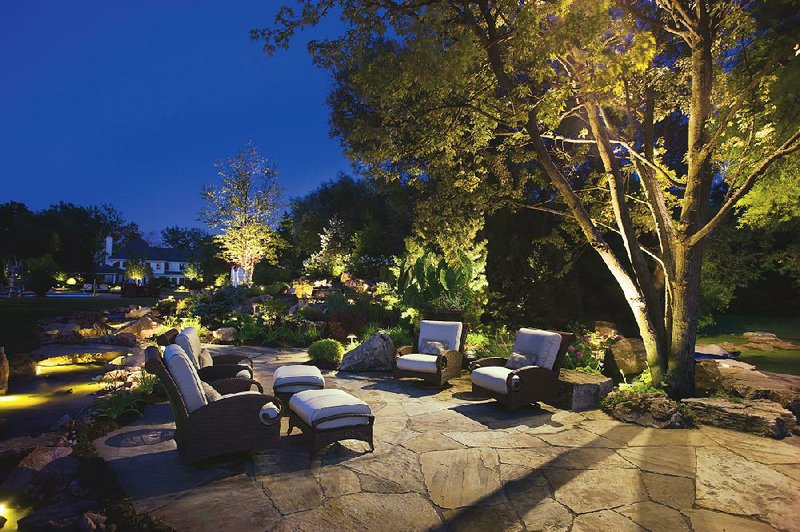Landscape lighting has changed a lot over the last 25 years. Just ask Larry Ward of Lights Plus Electric in Little Rock.
Ward says when he began installing lights outside residents' homes in the 1980s, landscape lighting was expensive and rare. The 120-volt line voltage wires used to supply power to yard fixtures could only be installed by electricians, and the lights were primarily used around large houses.
Slip and fall accidents (and the resulting litigations) and safety concerns prompted a shift in thinking, making landscape lights essential around pathways and steps a few years after he began his business, he says. And that caused an increase in landscape lighting installation.
Now with the invention of LED lighting another shift has taken place, Ward says.
"Recently, in the last five or six years since LED technology has come along, it's picked up again," Ward says. "LED is so much better than anything we've ever had."
Customers get 30,000 to 50,000 hours per LED bulb in comparison to 2,000 to 5,000 hours for a conventional halogen bulb. Add to that low voltage bulbs and fixtures that run on 12 volts that can be installed by laymen with some basic wiring knowledge and the result is landscape lighting for the masses.
...
One of the many things that has changed about landscape lighting in recent years is placement. Traditionally, landscapers focused on pathways and steps for safety; entryways and porches for security; and architectural elements and trees for beauty.
The design trend of creating outdoor "rooms" -- such as outdoor kitchens and cozy sitting areas with comfortable couchlike seating -- has led to a new world of options for illuminating those spaces for nighttime use.
"The trend is just finding more and more uses for the lights," according to Mark
Willits with Illuminations Outdoor Lighting Specialists of Siloam Springs.
For outdoor kitchens, soft light is in and there are lights for just about every surface, he says.
"There are new LED lights that are made to fit under a ledge to give soft lighting," Willits says. "We have installed those around a lot of outdoor fireplaces and under the counters on outdoor grill areas."
Pools and water fixtures also benefit from the attention lights create, he says. Lights can be placed under waterfalls to create a stunning effect or around pools so the area can be enjoyed at night.
HANGING AROUND
Pendant lamps are also showing up in outdoor applications. They can be hung from arbors and trees, Ward says. "If you use pendants and stagger them, you can get a nice look from that," he says.
Any outdoor space can be lighted as long as one thinks in terms of living space, but don't overdo it, warns Stephen Gilbert of Green Republic Design Group.
"You have to think about the useful spaces," Gilbert says. "It kind of mimics the plan you have in daylight."
That means residents should light features in their yards that they wish to use at night, he says.
UP OR DOWN?
Down lighting from trees and arbors is also popular now, says Sarah Burr with Ozark Design Studio LLC in Jacksonville.
Down lighting or spotlighting often uses the same fixtures as up lighting -- the traditional method of lighting architectural elements from below -- but with different mounting brackets, Ward says. But in down lighting, designers hide the fixtures in trees or other tall objects. In daytime the fixtures disappear and at night their downward glow makes the space usable and inviting, Burr says.
Another popular new effect is called moonlighting. Fixtures placed high in trees and aimed at the ground on an angle to create interesting shadows give an effect reminiscent of moonlight peeking through the trees.
"That's a really cool effect," Willits says.
HomeStyle on 07/26/2014

